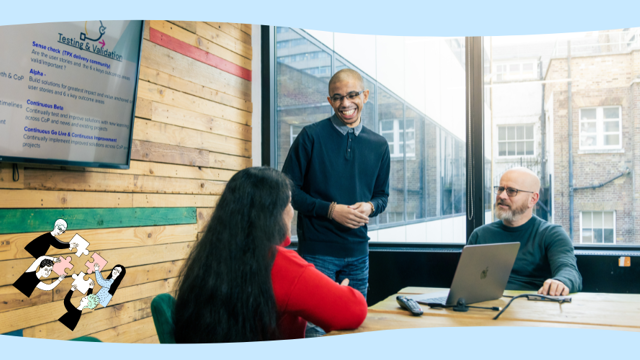We often hear requests to future proof a client’s website. It’s not a surprise when a website build can take over 12 months of intense work and over £100,000 in budget, organisations want to do everything in their power not to have to repeat such investment in a matter of years.
Future proofing can mean many different things, like ensuring that the site is flexible enough to accommodate evolving requirements and new content. Or that it will sustain the test of time and won’t require a rebuild to upgrade within the next five years. Future proofing can go as far as the ability to serve as a platform at the centre of a decoupled digital infrastructure.
We’ve got years of experience working with membership organisations (British Psychological Society, MND Association, PSHE Association, Bond, The Association of Colleges). Future proofing for them often means a flexible approach to ensure that the site can keep evolving with changing business and users’ needs, isn’t locked down to a theme and doesn’t rely on much custom code which is difficult to maintain.
How to ensure the longevity of your membership website
1. Invest in user research.
User interviews are a powerful qualitative research method to uncover insights into how your audiences actually use your services. It’s particularly important for membership organisations which often have a good understanding of what’s important to their members, but often less evidence of why.
For Bond, the UK network for organisations working in international development, the value of our user research was in understanding the longer term trajectory of members’ evolving needs. This allowed us to co-design the member dashboard area with end users. A good mix of quantitative and qualitative research methods is likely to uncover opportunities to develop your offering to members in new ways and ensure that your next website supports them in the long term.
2. Follow user centred design principles.
Converting insights from research into design and eventually building a site without diluting the vision can be quite tricky — internal stakeholders’ competing priorities often get in the way of prioritising what would make the biggest difference to end users. Responsive design is non-negotiable these days so we take a device-agnostic approach that ensures that experience is not deprecated on smaller screens.
To help us stay focused on the long term vision, we summarise the insights into actionable design principles to guide us. These principles support the membership organisations we work with to prioritise features that will have the biggest impact on retaining and growing the membership base.
3. Ensure your technical choices are informed by long term strategy.
The discovery phase of a website rebuild project often involves several workshops to gather and prioritise requirements. This ensures that your online presence supports your business goals. Whether your organisation is considering a more personalised offering to members or improving its CPD offer, these decisions influence the digital platform you choose and need to be factored into the website investment.
If your organisation doesn’t have a robust Customer Relationship Management (CRM) system in place it is a perfect opportunity to evaluate its requirements as CMS choice can be impacted by CRM, and some systems are built to communicate seamlessly. For example, the new website for the PSHE Association uses Hubspot for CMS and CRM, offering personalisation out of the box.
A website rebuild is an unmissable opportunity to improve your organisation’s processes and ways of delivering value to members so it’s essential to resist the temptation of quick (short term) fixes.
4. Have a roadmap to guide you.
The user research and all the requirement gathering activities have likely generated a list as long as your arm and that’s great! The more you can look into the future and anticipate your members’ needs, the more confidence you can have in your technology choice. You should group the outstanding work and generate a roadmap of developments post launch.
Do ask your digital agency to support you in creating business cases for new service or product development based on the roadmap. Where there’s been no budget previously, new doors open where there’s a possibility to generate income.
5. Iterate continuously, launch is just the beginning!
Working with a roadmap and regularly testing your website’s relevance with your end users, is half of the success. The work on your websites is never finished! By taking an iterative approach and adopting mechanisms for continuously collecting feedback from users you’ll get the most of your investment, and future-proof your site as much as possible.
Just think of running your website as owning a house. If you don’t regularly check the roof, pipes and boiler you can count on having some expensive repairs sooner rather than later. Whereas if you maintain and update it on a regular basis, it will last you longer, at less overall costs, and with more enjoyment. The same goes for your website: build it with user needs and business objectives in mind, then use a roadmap, feedback and iterative development to maintain it well into the future!
Our recent insights

Shaping product and service teams
How cultivating product and service teams to support the needs of the entire product lifecycle can ensure brilliant delivery.
Read more
Building ‘The Chatbot’ - Our experience with GenAI
Learn how we harnessed to power of Generative AI to build our very own chatbot.
Read more
How digital transformation can improve access to justice
Jay Bangle discusses the power technology has to open up justice services to everyone
Read more

